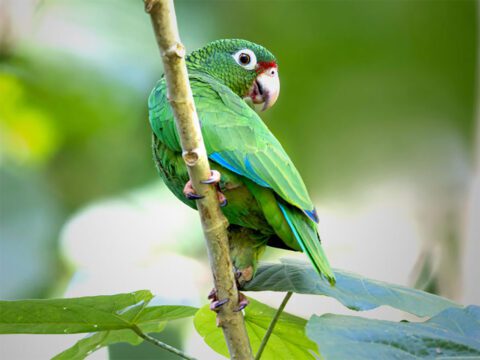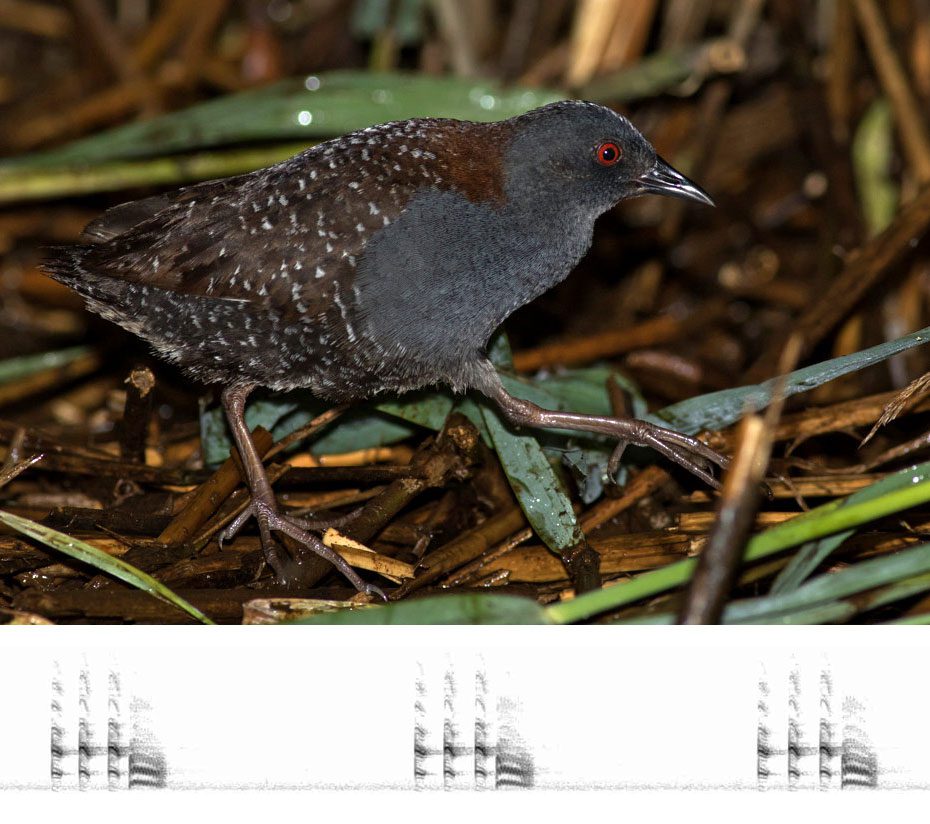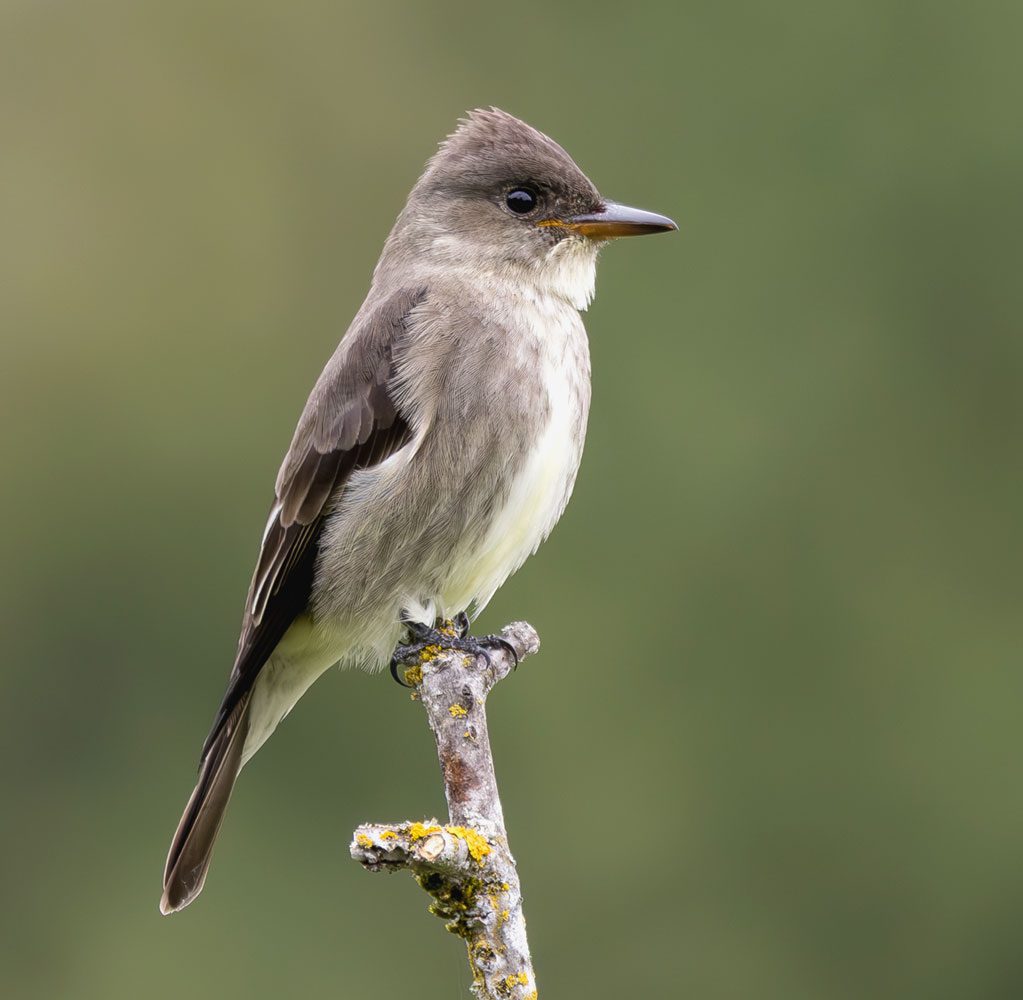What Conservation Sounds Like
New bioacoustic tools are revolutionizing scientific research and enabling much quicker conservation efforts around the globe.
September 28, 2023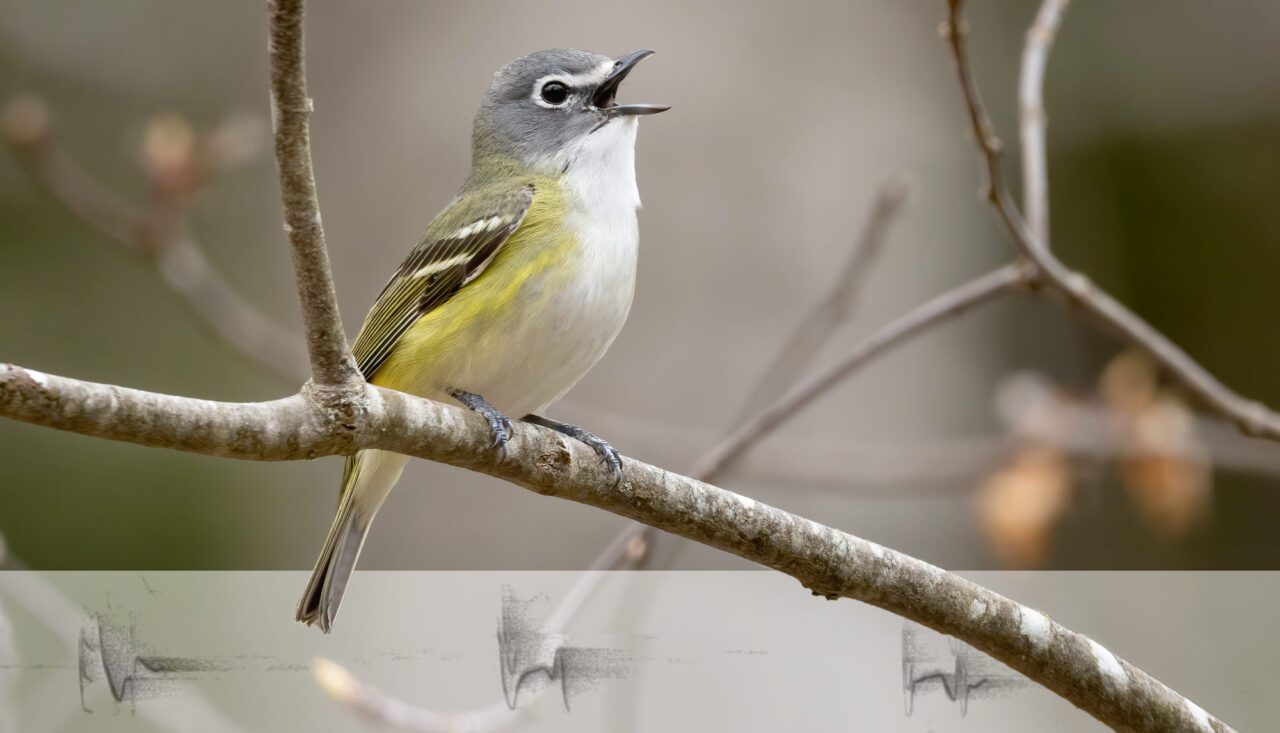
From the Autumn 2023 issue of Living Bird magazine. Subscribe now.
This story originally appeared in bioGraphic, an independent magazine about nature and regeneration powered by the California Academy of Sciences.
The Eastern Black Rail is a subspecies of bird that’s one of the most elusive creatures a wildlife biologist can choose to study. Adults are the size of a human fist. Chicks are the size of golf balls. Both are dark and shy, the better to hide among the dense marsh grasses under which they skulk and scurry. The birds are maddeningly difficult to lay eyes on. Search YouTube, which has hours of video of pretty much everything, and you’ll find just eight videos of Eastern Black Rails, the longest of which is barely over a minute.
Hardcore birders try in vain to check this subspecies (Laterallus jamaicensis jamaicensis) off their life lists; those who do usually hear the bird rather than see it. Professionals do little better: Christy Hand, a biologist with the state of South Carolina who’s been studying the Eastern Black Rail for nearly 10 years, has seen only a handful, each for just a few seconds.
For the past decade, she’s pursued these minute birds throughout her study area in the Ashepoo, Combahee, and Edisto basin (also known as the ACE, named after the three rivers that meet there). It’s one of the largest undeveloped estuaries along the U.S. Atlantic coast. She is still unsure exactly how many Eastern Black Rails live there—a few score? a few hundred?—but they’ve inhabited her mind.
“People working with rails,” she says, “we tend to be a bit quirky. I dream about the rails. I don’t dream about Wood Storks so much because I can just look at them. But with the rails, I’m always wondering what’s going on. I get these little glimpses and I think my brain’s trying to fill in the gaps.” In her mind she hears their distinctive kickee-doo song.
The call is a great boon to Hand’s work, as it’s the easiest way to locate the birds. Yet taking a census of rails by sound is problematic, because the birds don’t seem to have anything like a set schedule of when they are most vocal. Day, night, dawn, dusk? They seem to favor no hour. This makes it tricky to design a traditional point-count study, in which trained birders detect bird presence by going out to look and listen for short periods at a precise time of day in a particular location. In addition, the rails often move from place to place as water levels in their marsh habitat change, so you can easily miss them even in a spot you know a family of rails frequents.
To get a handle on these birds, Hand has had to try new ways to find them and learn how they live. For a while, she would go into their habitat and play an audio recording of a Black Rail, then listen for replies. She’d get some. But she wished for something better and less intrusive, partly out of concern that the artificial calls might disrupt the birds’ normal social behaviors.
About five years ago, the falling prices of autonomous recording units, or ARUs, made it practical to leave audio recording devices in the field to capture all the racket near a given spot. Then the problem became how to go through all that audio. Listening to it in real time would require hundreds of hours of painstaking work by people skilled at identifying birds by their vocalizations— not really an option for a small team in a modestly funded state operation. Then in late 2020, Hand heard of a new bird-call recognition app called BirdNET, created by a young programmer named Stefan Kahl of the Cornell Lab of Ornithology. The app creates a so-called deep neural net—an artificial intelligence algorithm that mimics the human brain’s decision-making routines. It excels at discerning, in complex sonograms like those from Hand’s recordings, the distinctive shapes of individual species’ songs, calls, grunts, buzzes, croaks, barks, and hisses. It streamlined into one process the multiple steps of Hand’s previous toolset and could analyze hundreds of hours of sound in just a few days.
BirdNET turned out to be just the fast and easy bird-ID tool Hand was looking for. With Kahl’s help, she has used her existing audio recordings of Eastern Black Rails to train the app to recognize those songs, and she can now measure Black Rail presence in a fast, efficient, and low-impact way.
This past spring she acquired 16 ARUs that her team arranged across six wetland areas in the ACE basin, where habitat management for rails was already ongoing or planned. The battery-powered units, each the size of a small paperback book, record several hours a day in the morning and evening. The sound goes onto SD cards that Hand pulls once per month to harvest the data, which is backed up and then sent to Kahl at BirdNET for processing. And for the first time, Hand is gathering enough data from enough points that she’s getting a better feel for the rail’s distribution. The data is still not broad enough to enable her to estimate the population. But it’s rich enough to help her evaluate the effects of the department’s management tools, such as adjusting water levels in impoundments and strategically burning vegetation to create rail-friendly ground cover. The data will only become richer as she collects it in subsequent years.
Via the calls and songs of adults and the twittering of juveniles, as well as certain periods of quiet (for the birds call far less often when sitting on eggs), Hand is also hoping to gain the ability to detect where and when the rails are breeding and raising young, as well as whether the young are living long enough to fledge. In this way she’d be getting an unprecedentedly detailed look at the birds’ life histories and how they use the different environments within the ACE basin. It’s still early times. But the ARUs and BirdNET are opening new vistas for her. “It’s a total game changer,” she says.
Listening to the Natural World: Land, Air and Sea
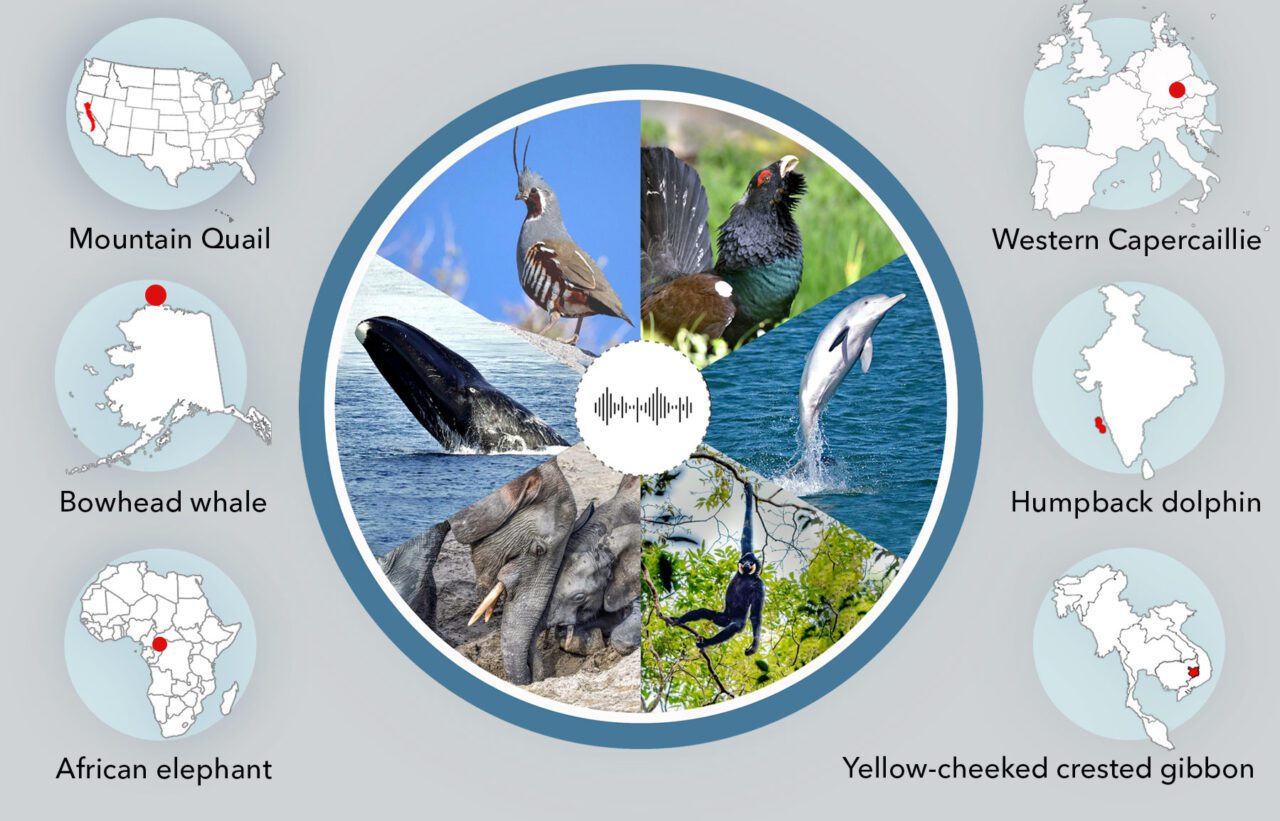
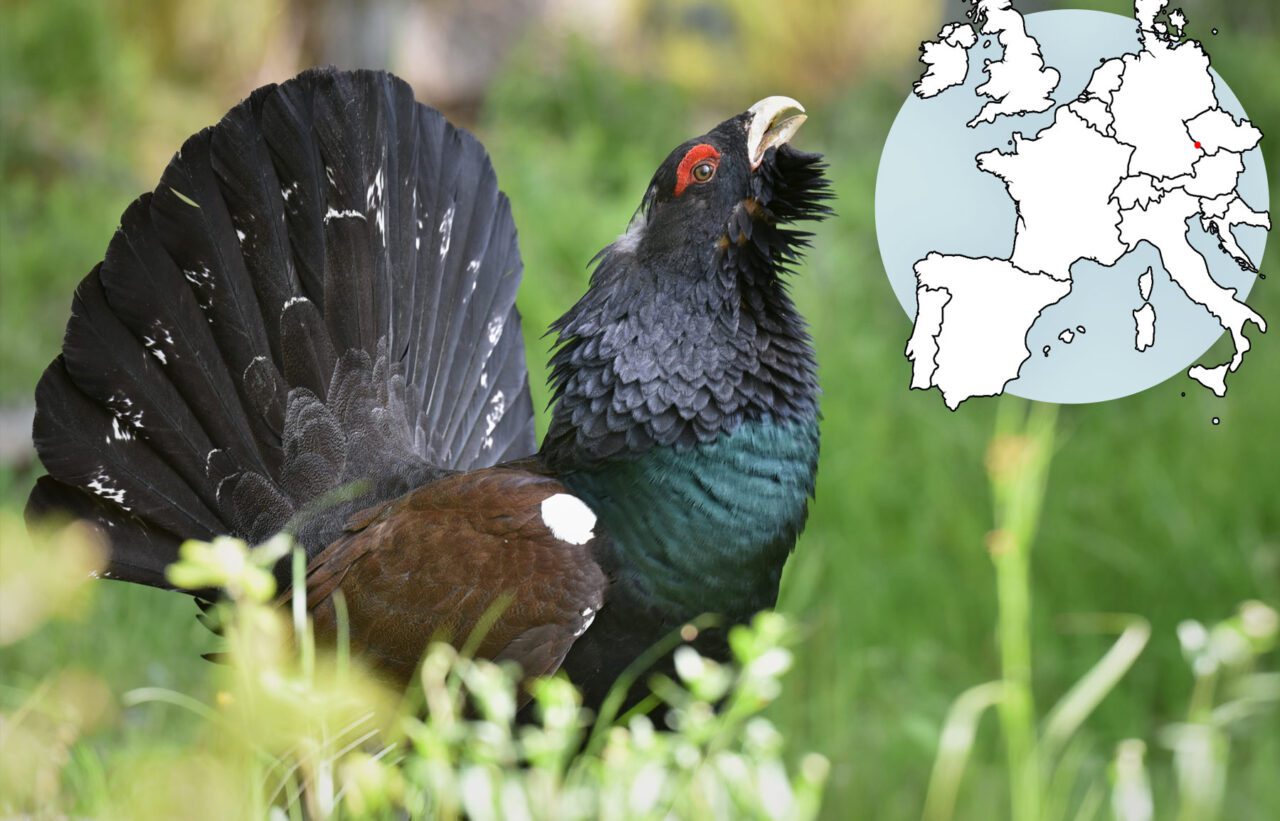

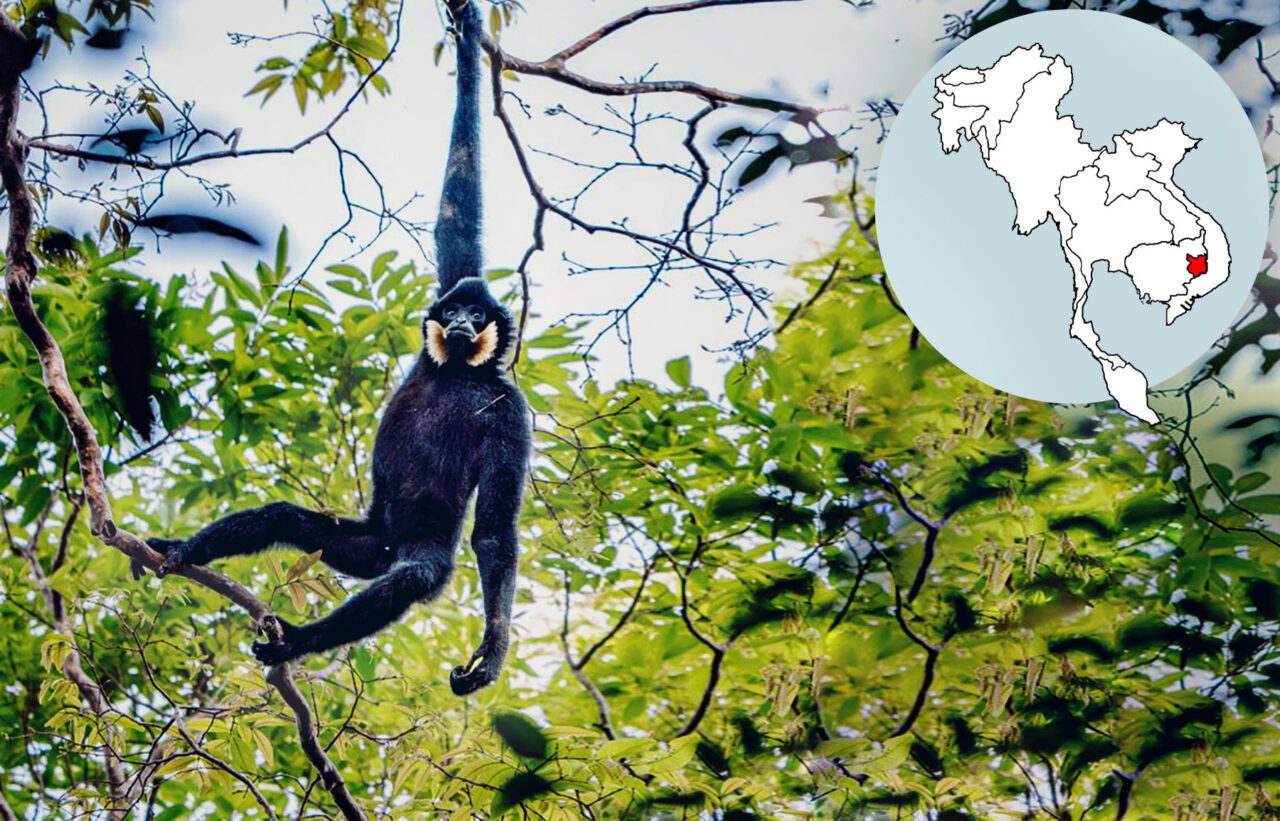
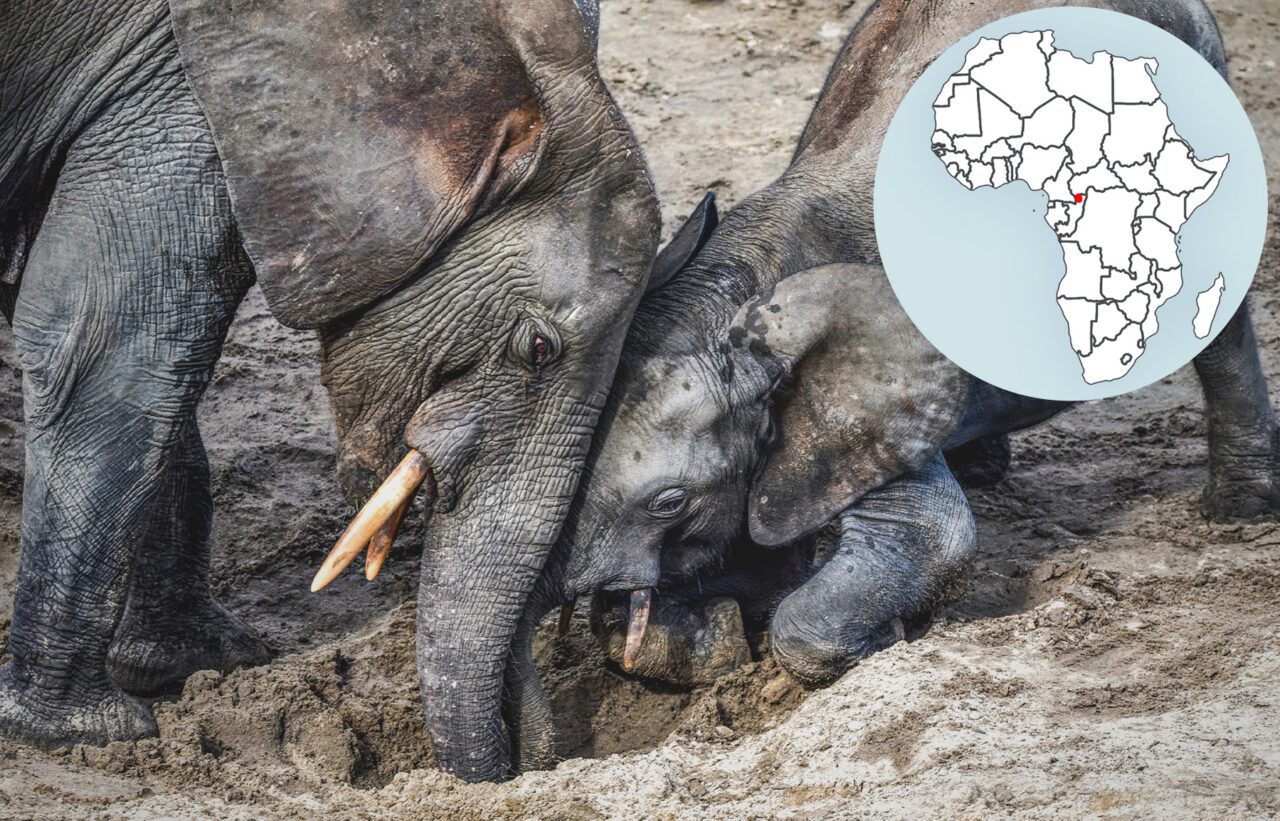
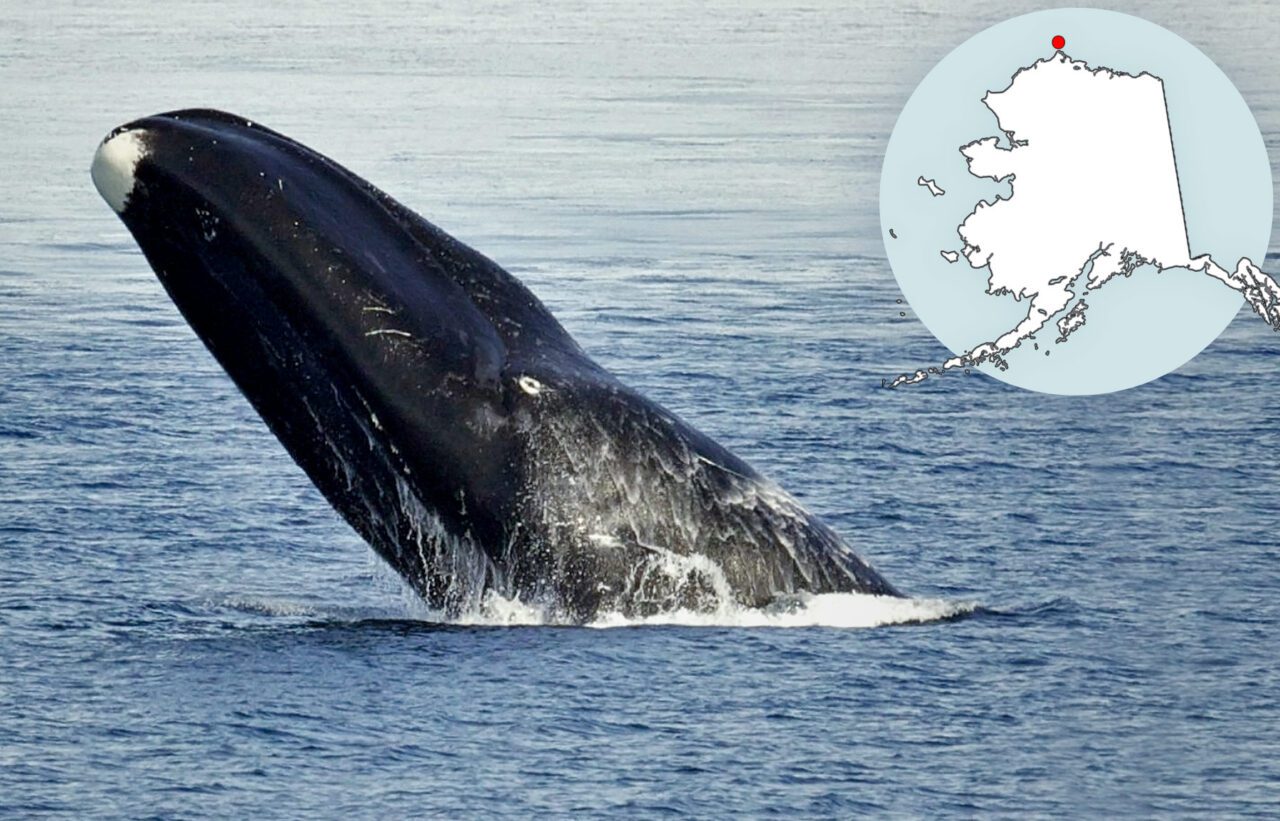
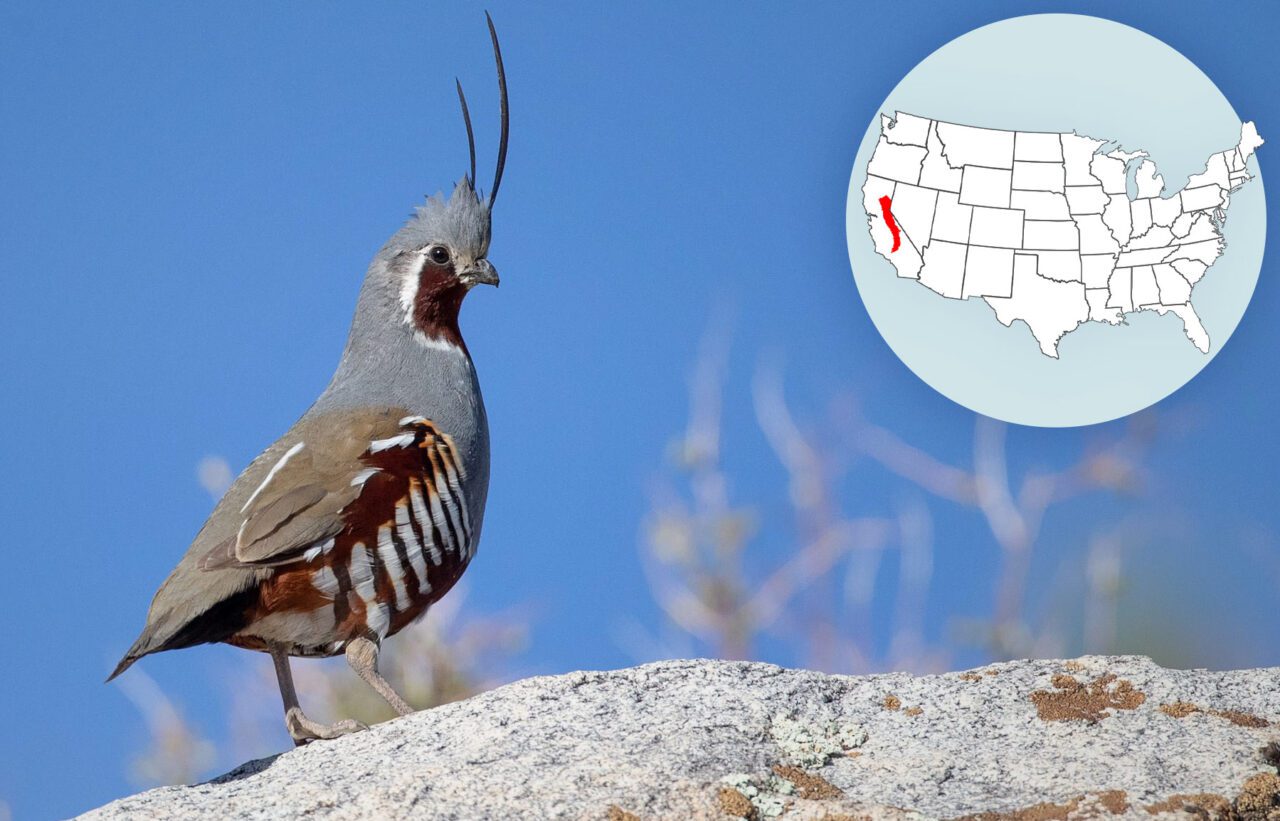
Hand is a pioneer of sorts, but she’s hardly the only researcher or conservationist to deploy ARUs and call recognizers. Over the past few years, these newly efficient, transformative tools have begun to revolutionize research and conservation practice around the globe, thanks to the speed at which they can gather and process information about animal and human presence.
The first known recording of any bird occurred in 1889, when 8-year-old Ludwig Koch, the “godfather of bird recording,” used an Edison cylinder machine to record the song of a captive White-rumped Shama at the Frankfurt Zoo. The first known academic sharing of a recording came nine years later, when Sylvester Judd played recorded songs of captive birds for the Congress of the American Ornithologists’ Union in Washington, D.C. And the first known recordings of wild birds were made in England, in 1900, when Cherry Kearton captured the songs of the Common Nightingale and Song Thrush.
Many observers, however, trace the birth of bioacoustics as a scientific discipline to the work of William Schevill, a researcher at Harvard College and Woods Hole Oceanographic Institution, who first heard whale songs while eavesdropping on naval ships for the U.S. Navy in World War II and soon began recording them. In his 1949 paper “Underwater listening to the white porpoise,” one of the first scientific publications to focus on animal sounds, he described porpoise utterances that evoked an orchestra tuning up: “mewing and occasional chirps,” bell-like peals, sounds like those of an echo sounder, and occasionally, “calls [that] would suggest a crowd of children shouting in the distance.”
The decades since have seen thousands of bioacoustic studies, most devoted to sea mammals or birds. But in the past half-dozen years or so, the development of cheap, tough audio recording units and fast, sophisticated call recognizers is taking the field of bioacoustics into new and exciting terrain, both figuratively and literally.
This conservation bioacoustic work ranges from the closely focused, like Hand’s rails, to the expansive. Research teams are using recorders to study the dynamics of aggressive loon calls (who knew?); monitor shipping lanes for whales so vessels can reroute around them; observe how fish and coral larvae locate their home reef by perceiving its distinctive sound; detect the presence of crop-devastating insects before they proliferate; and monitor protected lands for the sounds of illegal logging and hunting. They can even perform a sort of quickie health exam on some ecosystems. In a simple but powerful discovery, researchers conducting a study for The Nature Conservancy in Indonesia found that they could estimate the diversity of species in a Bornean forest just by analyzing how much of the sound-frequency spectrum was occupied by animal vocalizations.
The granularity of this type of data—its density in both space and time—is the key to its new power. The ability to keep tabs on species’ presence in many places constantly, rather than occasionally, essentially creates a giant new instrument exquisitely sensitive to change at both population and ecosystem levels. It’s as if a large collection of lenses were merged into one giant lens that could see things the smaller ones could not.
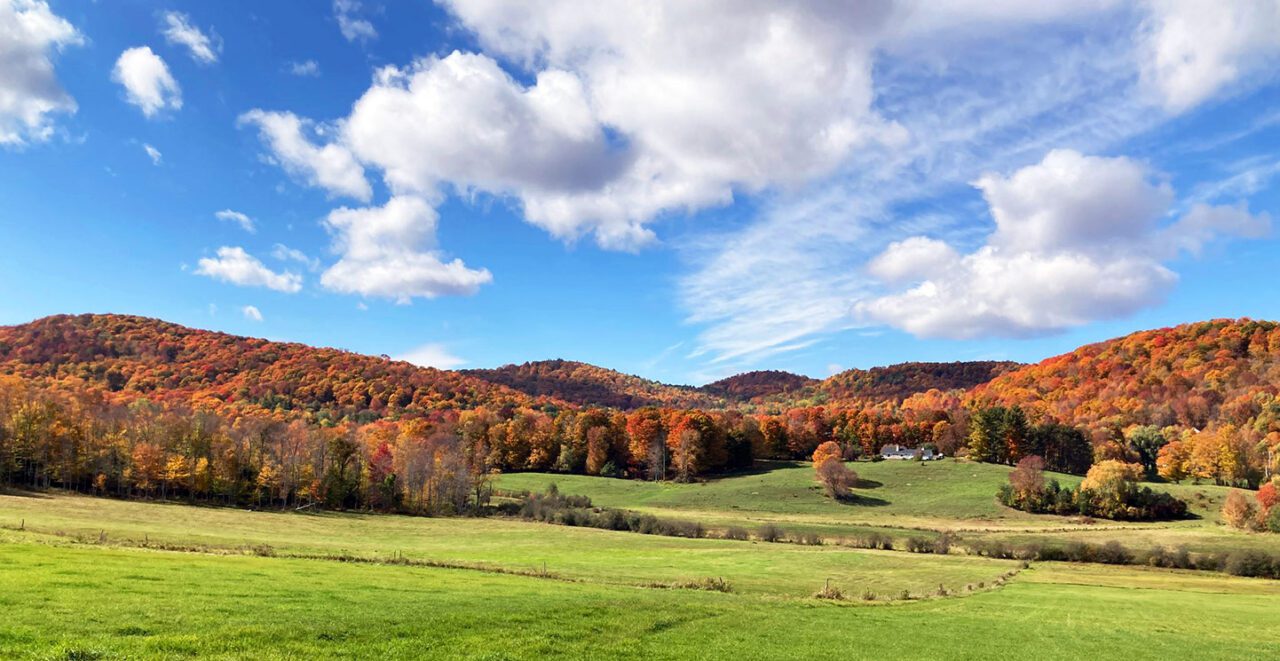
One day this past June, I took a walk with U.S. National Park Service ecologist Aaron Weed around his workplace in the steeply hilled, sweetly forested 600 acres of Marsh-Billings-Rockefeller National Historical Park in Woodstock, Vermont. This park’s woodlands, managed sustainably for well over a century, are part of a nearly contiguous forest stretching across some 30 million acres in northern New England and New York State—an area known here as the Northern Forest. In the 1800s, settlers and sheep farmers cut this huge forest hard, so that a landscape once around 85% forested became 80% cleared. Since then, partly through care and partly through benign neglect (as the farmers moved west to better farmland), the woods have rebounded. They now cover some 90% of the terrain.
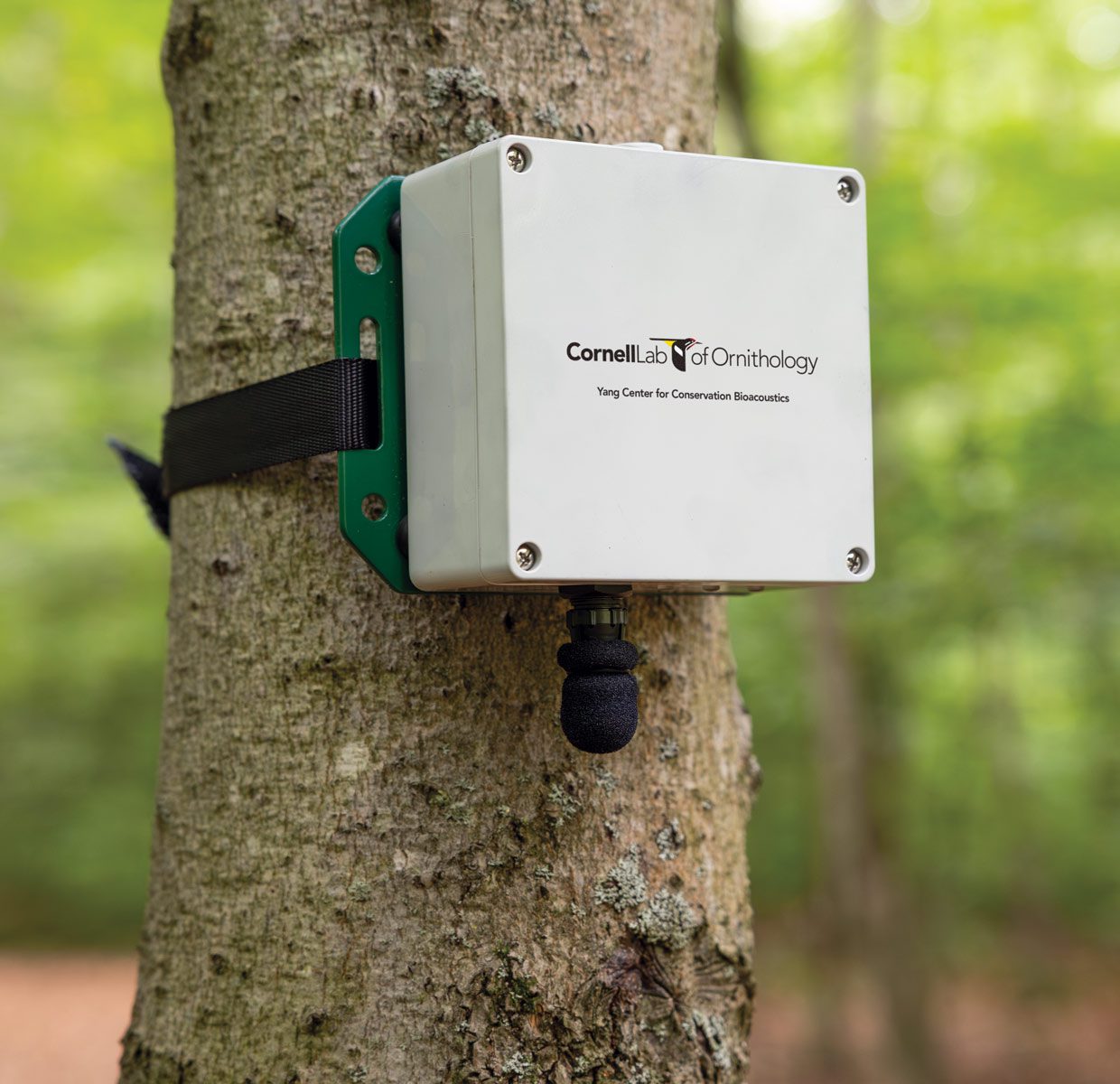
This forest, however, today faces a century in which a different human-made force, climate change, will alter its species composition and health in broad, fundamental, and sometimes troubling ways. Weed is part of a team creating a regional system of bioacoustic observations to track—and help predict and manage for—these coming changes. This venture, the Northeast Temperate Inventory and Monitoring Network, coordinates studies and data for 13 National Park Service holdings in the Northeast, from Acadia in the far north to a small holding in Morristown, New Jersey.
A significant focus of this work is monitoring bird presence within these boundaries, as one of the “vital signs”—along with factors such as water quality, forest cover, and forest composition—of ecosystem health. Marsh-Billings hosts more than 125 bird species, from Bobolinks to waterthrush, over the course of a year. For years, the most rigorous tallies of these populations have come from volunteers who do spring point counts, going at dawn to specific locations and writing down every bird species they recognize by sight or sound in 10 minutes. To accompany a birder on such an outing, stumbling over rocks and roots or bushwhacking through dense brush to listen quietly as black flies mob you, is to appreciate both the volunteers’ devotion and what a labor-intensive process it is to gather the information. Yet these point counts yield only a single day’s worth of data each year, and their accuracy varies with the expertise of the volunteers.
In contrast, the ARUs Weed deploys can tally bird presence from day to day, providing a far more dynamic picture of species presence. (They can also be combined with point-count data to give more accurate results than either method alone.) These ARUs, called Swifts, are similar to those used by Christy Hand: Each is a box of electronics that records every sound within earshot at whatever intervals Weed specifies, day after day, as long as the temperature is between -31 Fahrenheit and 122 above.
On our walk, Weed led me up a gentle slope forested with maple, birch, and ash to show me one of the units. The device was strapped at chest height to a maple, a white metal box about five inches square and two inches deep. Removing the cover exposed three D-cell batteries, a circuit board, and a 128-GB SD card; from its bottom stuck a stubby microphone with a black foam windshield. Every day for several weeks in spring, it turns on from 5 to 10 a.m. and 7 to 8.30 p.m. to record the morning and evening bird song.
BirdNET in the field
Researchers in Vermont are refining a customized version of BirdNET software so it can distinguish between very similar bird songs, such as vocalizations by Red-eyed and Blue-headed Vireos. The scientists are studying how different species use different forest habitats.
Red-eyed Vireo
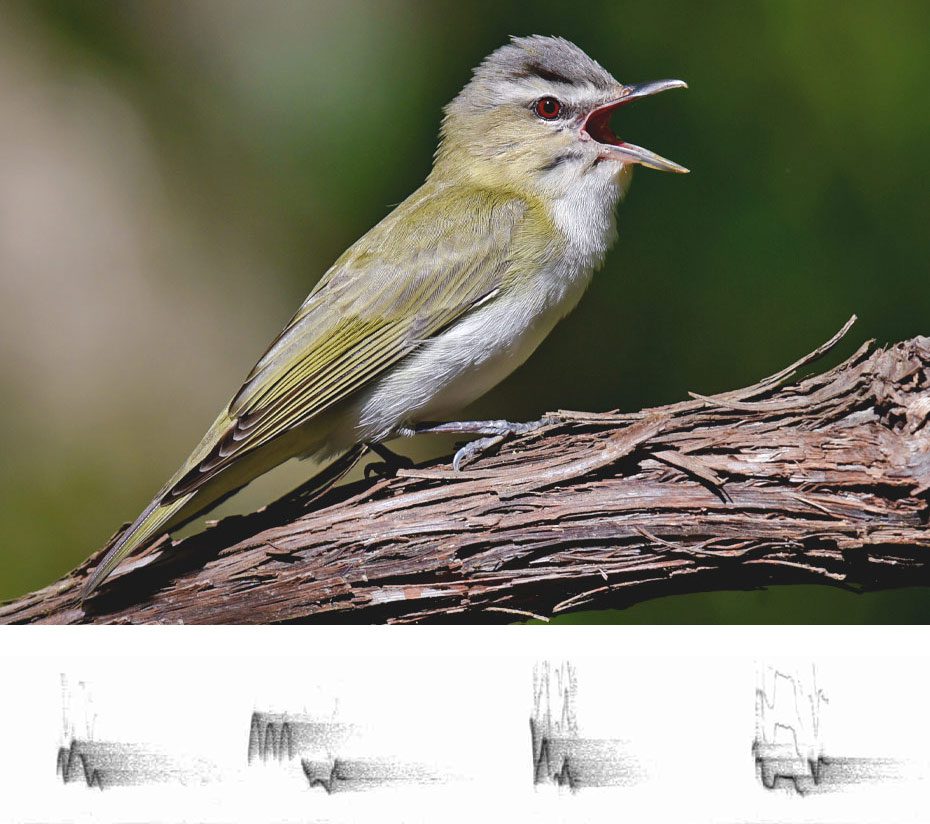
Media from Macaulay Library: photo by Scott Martin, spectrogram of audio by Wil Hershberger.
Blue-headed Vireo
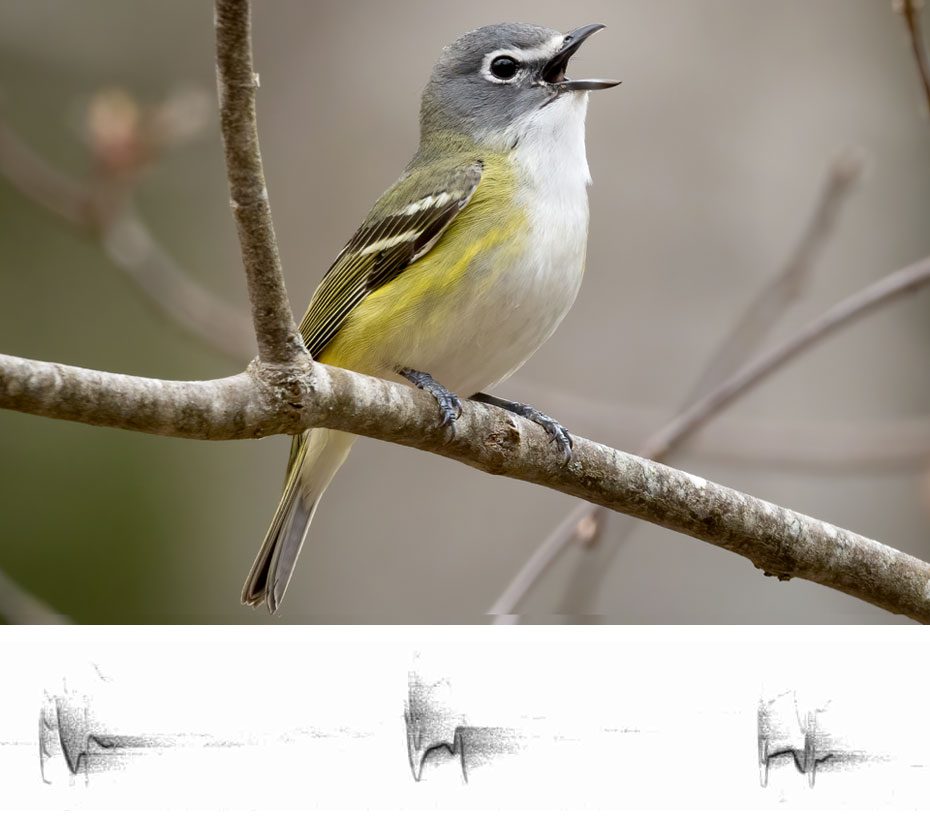
Media from Macaulay Library: photo by Lyall Bouchard, spectrogram of audio by Jay McGowan.
By listening in on birds’ daily activities in multiple locations—not just around this park but the others in the 13-site monitoring network—Weed and his collaborators will gather a richer read on how birds use specific types of woodlands. They will see, for instance, how populations grow, shrink, or shift location as the emerald ash borer, a threat already, continues to decimate ash stands. They will learn almost instantaneously how various bird species and bird communities respond to forest-harvesting regimes ranging from selective harvesting to clear-cuts small and large.
Right now, still in the early stages, Weed and his colleagues are working to refine their own localized versions of BirdNET. This involves checking BirdNET’s IDs one at a time against expert IDs of individual songs to ensure that the algorithm will reliably make the toughest identifications—discerning, for example, the subtle differences between Red-eyed versus Blue-headed Vireo songs. They hope to add stereoscopic microphones that can tell when two similar bird songs come simultaneously from different directions, which would allow them to estimate the number of individuals singing—to measure not just occupancy, but also abundance. And they hope to add bats, perhaps frogs, and some insects to the species identified, for those, too, can be devilishly hard to tally.
The detailed granularity of ARU-acquired data will allow Weed and his colleagues to investigate something they’ve not yet been able to analyze: how the vocalizations of some bird species influence the behaviors of others. In much of the Northern Forest, for instance, vireos and Ovenbirds, which sing often and loudly, take up a lot of the soundscape. “So how do other species respond to this?” asks Weed. “How do they adapt? Have they essentially been able to create some niche space by having different frequencies?” As Weed puts it, “There’s all sorts of cool stuff you can pull out of this data.”
Perhaps most important: As an altered climate imposes a fundamental transformation of these forests—potentially replacing Vermont’s iconic sugar maples with oaks, for instance—Weed and his colleagues should be able to more readily see, and hear, birds and other species adapt (or fail to adapt) to the changing landscape.
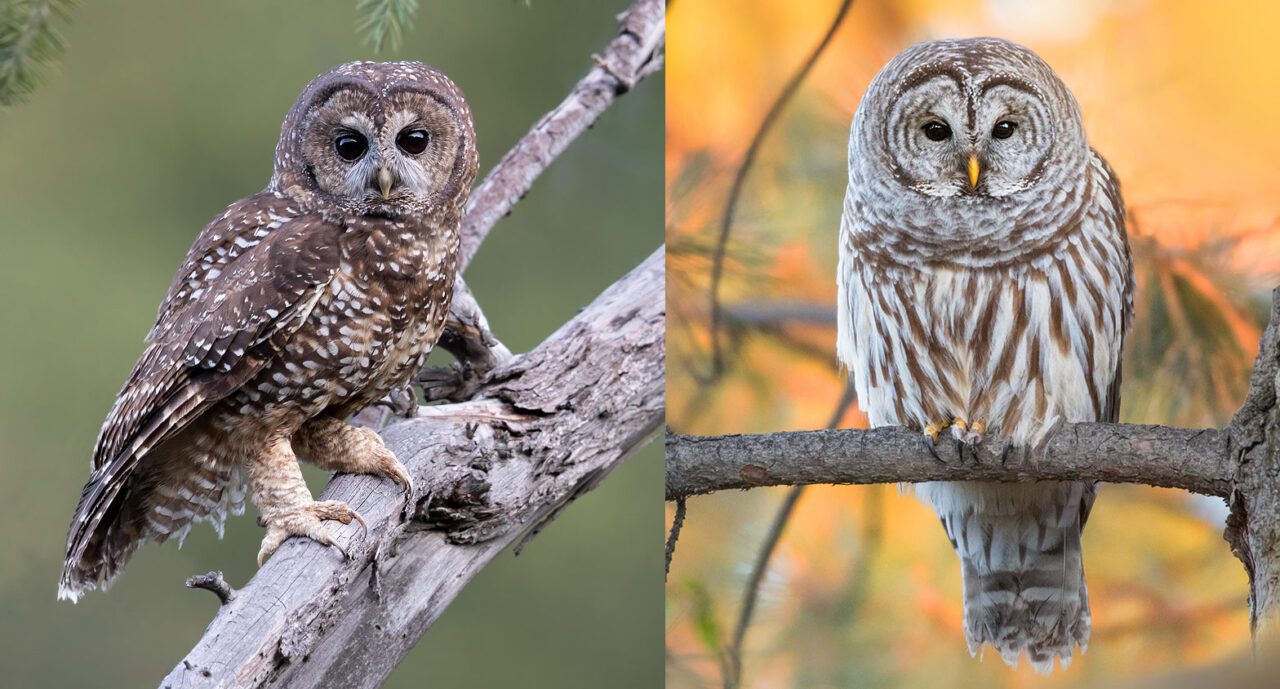
Perhaps the busiest user of these bioacoustic tools and techniques is the Cornell Lab of Ornithology’s own K. Lisa Yang Center for Conservation Bioacoustics, a 36-year-old department that has long helped lead the field. The center today is rapidly expanding thanks to a $24 million endowment from philanthropist Lisa Yang in 2021. Plenty of bioacoustics conservation projects have been and are being done without Cornell’s involvement. But its experience, funding, and tool development have made the center one of the biggest players in the field.
And its largest project so far stands out as a prime demonstration of the discipline’s growing power and potential. This project began in 2017 high in California’s Sierra Nevada with a simple question: Was the Barred Owl, an invasive species, a major factor in the ongoing decline of the native California Spotted Owl? The project would help answer that question decisively—and also lay the groundwork for a much broader investigation in the region.
The question of whether Barred Owls threatened Spotted Owls in general was not a new one. Earlier in the 2010s, teams in both the Cascades of Oregon and the coastal mountains of northern California had shown that Barred Owls—which were originally limited to eastern North America until changing land use and other factors allowed them to expand westward beginning in the 1800s—were bullying and driving out Northern Spotted Owls, a subspecies already famous for losing old-growth habitat to logging. One team of researchers, led by the late Lowell Diller, who was a biologist with the Green Diamond Resource Company, had shown in 2016 that if you removed Barred Owls from the disputed area (by shooting them), Spotted Owls would soon reoccupy that area and resume successful breeding. But that first experiment, the paper concluded, needed to be confirmed by additional studies; if that happened, the authors predicted, “this could be the foundation for development of a long-term conservation strategy for Northern Spotted Owls.” (See Evidence of Absence, Living Bird Spring 2016.)
In the northern Sierra Nevada, meanwhile, the California Spotted Owl (a separate subspecies) also appeared to be threatened by an expanding Barred Owl population. Censuses kept there by federal, state, and university biologists showed the California Spotted Owl population (long considered by the state of California to be “of special concern”) steadily declining. Meanwhile, the Barred Owl intrusion continued southward. Many biologists worried that the California Spotted Owl would soon follow its northern cousin into federal threatened status. And since Barred Owl intrusions can happen quickly, time was of the essence.
One of the biologists researching this issue was Zach Peery, ecology professor at the University of Wisconsin–Madison. Peery had been tracking the Spotted Owl’s decline since 2001, and he knew that a team in Washington state had been experimenting with ARUs to help identify Northern Spotted Owls and Barred Owls there. Peery and Connor Wood, one of his PhD students at the time, aimed to do something similar in the Sierra Nevada, but on a much larger scale. Their goal was to collect “actionable data” from the majority of critical Spotted Owl habitat in California—about 2,300 square miles, nearly twice the area of Rhode Island—a feat that would have been unthinkable before 2016.
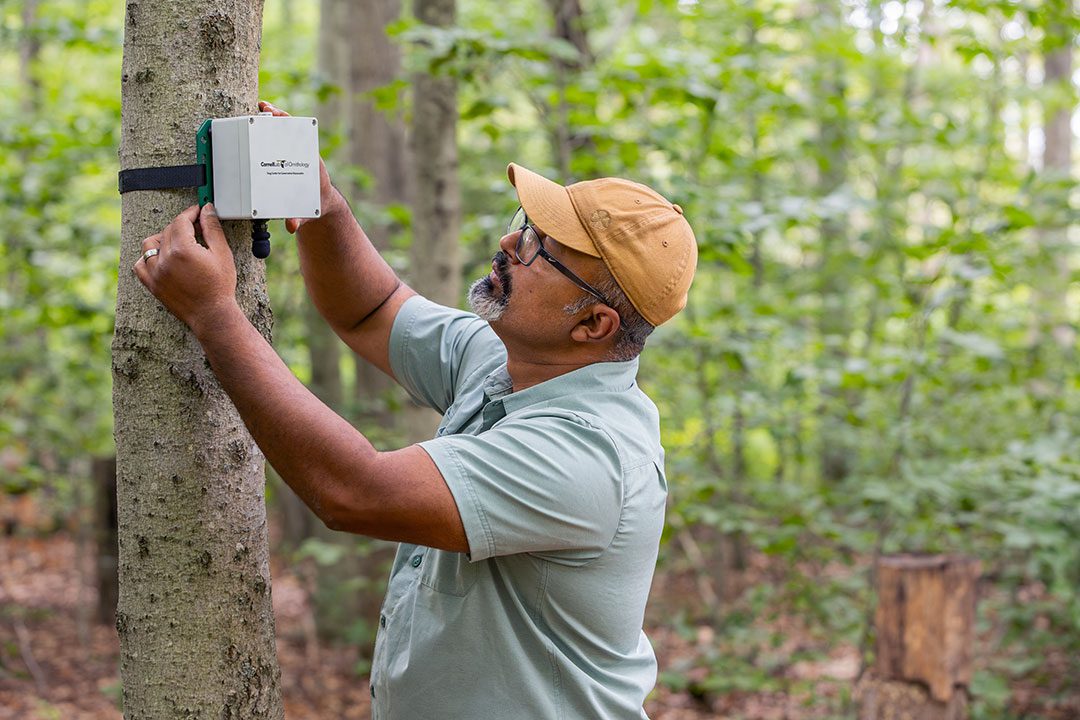
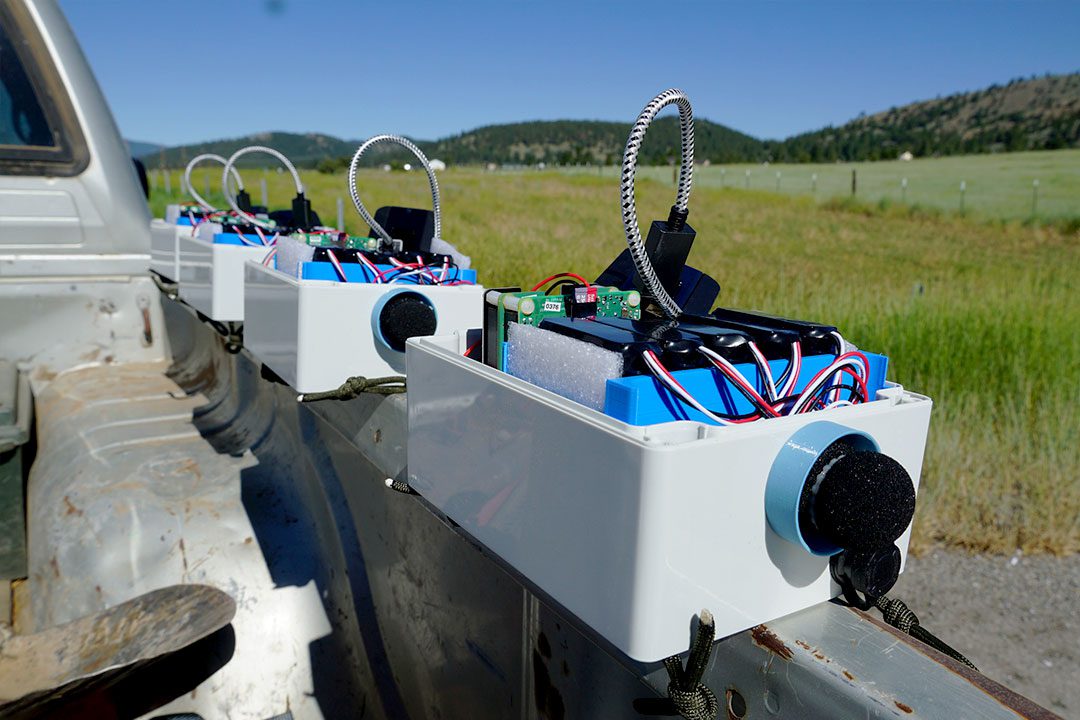
Having heard from the Washington team about the Center for Conservation Bioacoustics, Peery and Wood contacted director Holger Klinck to see what he would recommend. Klinck said he might have just the thing: The center had recently started making lightweight, easy-to-deploy, relatively inexpensive autonomous audio recorders (which would soon be branded as Swift recorders) that could be left in the field for weeks. Perhaps more important in making the project viable, the center had also created a software package, called Raven, that could be calibrated to recognize specific bird songs and calls amidst the forest soundscape.
Having reviewed data on typical Spotted and Barred Owl densities, the sizes of their territories, and available habitat, as well as project budget, the researchers concluded that obtaining a representative sampling of the birds’ distributions would require some 100 units rotated through 167 sites. The plan was to have Wood and five field technicians take the Swifts, strap them to trees scattered in a randomized pattern around the Spotted Owl’s critical habitat over two consecutive summers, and see if the Barred Owl was indeed taking over the Spotted Owl’s terrain.
Despite the early state of the technology, Klinck felt confident it would work. His only real concern, which he kept mostly to himself, was logistics—whether, in short, the team could deploy and manage so many ARUs at once. Not to mention the fact that the 28-year-old Wood had never worked with audio equipment or audio-processing software, managed a large field crew, or, for that matter, studied owls.
What Wood and his team lacked in experience, they made up for with energy and determination. For weeks, up several thousand feet in the Lassen and Plumas National Forests in northern California, they set up the Swifts; deployed them; visited them a week later to switch out their batteries, remove their SD cards, and swap in fresh ones; then moved them to new sites. By the end of the first summer, the team returned to Wisconsin having collected some 49,000 hours of forest noise, which Wood then ran through an audio processing tool he developed with the Raven software.
Finally, after manually reviewing all apparent detections, Wood and his team were able to produce a precise map of every “occupancy,” or sonic appearance, of a Spotted or Barred Owl. The map showed that within this enormous study area, which included most of the California Spotted Owl’s critical habitat, Barred Owls had encroached upon Spotted Owls in about 8% of viable forest.
The next year, 2018, the research team expanded its operation with more surveys and equipment. They surveyed every site three times to obtain more data, returning that fall with an additional 145,000 hours of audio. That produced another map of the owls’ territories that Wood and his team could compare to the one from the previous year. The picture was not pretty: The second map showed that the Barred Owl had expanded its share of the Spotted Owl’s preferred habitat to 21%.
The Barred Owl, in other words, suddenly occupied a fifth of the California Spotted Owl’s best habitat and was likely spreading. The data, Wood would tell me later, could not have been clearer. The Barred Owl was taking over. And it was going to wipe the Spotted Owl off the map.
That winter, in February 2019, when Wood presented the team’s findings to the annual meeting of the Western Section of the Wildlife Society—a group that had been monitoring and debating the owls’ fates for more than two decades—the conclusion was immediate: Everyone now agreed that the Barred Owls in the study area had to go.
Within weeks, the U.S. Forest Service and private timber company landowners agreed on a Barred Owl culling campaign, which was executed that spring both on federal and private land. A year later, Barred Owls inhabited just 3% of the disputed habitat, and the California Spotted Owl had recolonized 56% of its former range.
A 2022 research analysis of the culling campaign’s results published in the journal Frontiers in Ecology and the Environment concluded that the program had “averted the otherwise likely extirpation of California Spotted Owls” in that region (see Acoustic Monitoring Shows Need for California Spotted Owl Protections, Living Bird, Summer 2022).
That’s not necessarily the end of the Spotted Owl story, of course. Studies have shown that Barred Owls sometimes return to areas where they’ve previously been removed, and most experts agree that the species is in the Pacific Northwest to stay, making repeated removals necessary. Some biologists worry that Barred Owls are simply so aggressive that such measures will fail in the long run.
In the meantime, though, the two-year Frontiers study demonstrated that the new bioacoustic tools can gather actionable data at a large scale in a short period of time, and capture real-time dynamic events like the displacement of one species by another.
In the summers since, the team has expanded its Sierra Nevada project. Wood, who is now a research associate at the Cornell Lab studying biodiversity conservation through bioacoustics and quantitative ecology, is working with collaborators and even larger field crews to install Swifts across an even larger area. The new grid is spread across not just the former study area in northern California, but most of the Sierra Nevada range—an area roughly 400 miles long and from 50 to 80 miles across. They’ve deployed more than 1,600 Swifts, four times as many as in the original project.
The team is also broadening the scope of its research: This time they will monitor more than 100 bird species, as well as wolves and the Yosemite toad, which breeds only in the spring snowmelt high in the Sierra. The project should enable them to track not just species of particular concern but also how various animal populations and ecosystems respond to the impacts of climate change—both gradual and sudden—as well as efforts to manage habitats and mitigate those impacts through such measures as forest thinning and prescribed burns.
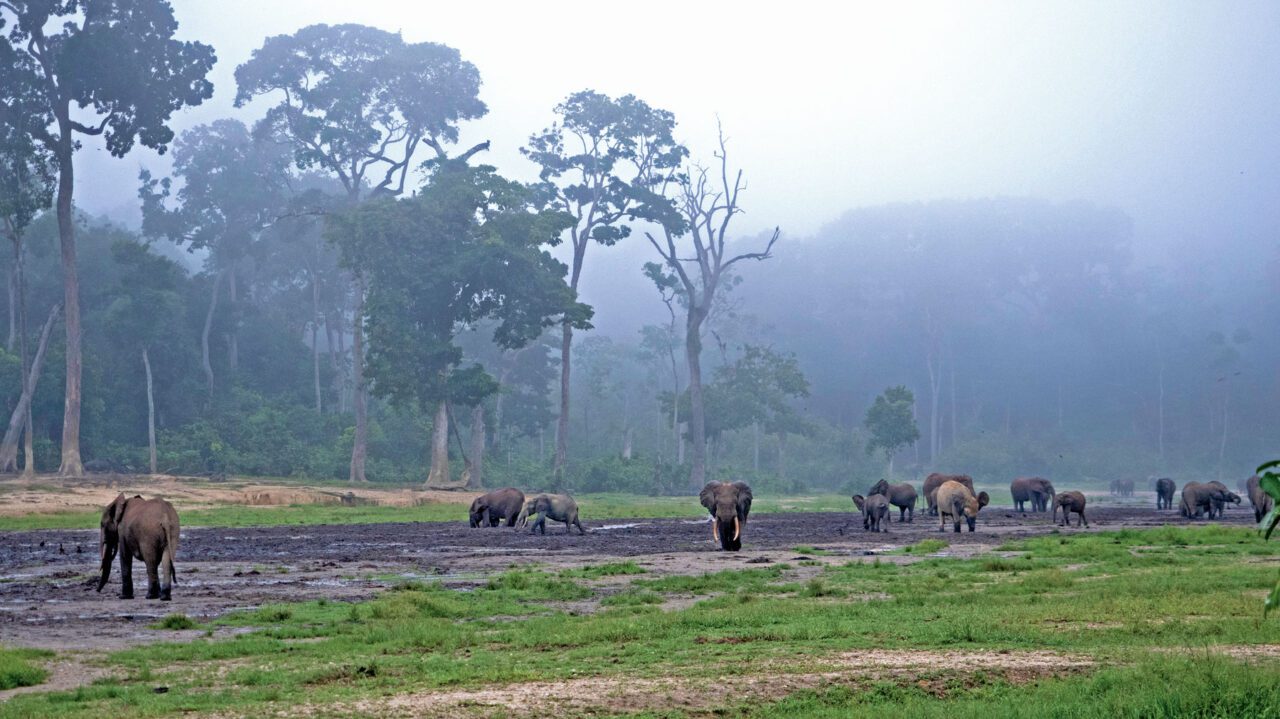
The growing ease and falling cost of bioacoustic technologies are creating a wildlife and ecosystem science that’s not just faster and more powerful, but more inclusive. Several Yang Center programs, for instance, are providing training and equipment for local communities at remote sites in Asia, Central America, Africa, and other biodiverse spots so that researchers there can do work driven by Indigenous interests and concerns. These investigations range from the welfare of key species to the enforcement of laws regulating logging, construction, and hunting.
At all of these locations, Yang Center researchers are now turning some of their most remote projects into learning centers to give Indigenous research communities deep grounding in the operations and possibilities of these tools. The Yang Center calls this “capacity building,” and it’s one of the three pillars of the center’s mission, along with research and technology development. For a long time, says director Klinck, this capacity-building pillar was underfunded. The $24 million gift from Yang in 2021 solved that problem.
“If we really want to have a global impact,” says Klinck, “we cannot be the bottleneck. It’s not scalable if people can’t do it for themselves.” Klinck and his Yang Center colleagues want to enable researchers of all origins and paths to pursue the many kinds of investigations the newer, more powerful bioacoustics tools make possible. To this end, Yang Center biologists are creating yearlong training programs in the use of ARUs, BirdNET, and other bioacoustic tools, as well as study design, so that local collaborators are able to both use those tools themselves and teach others to do so. The goal is to not just develop collaborators but to mentor a new generation of independent researchers.
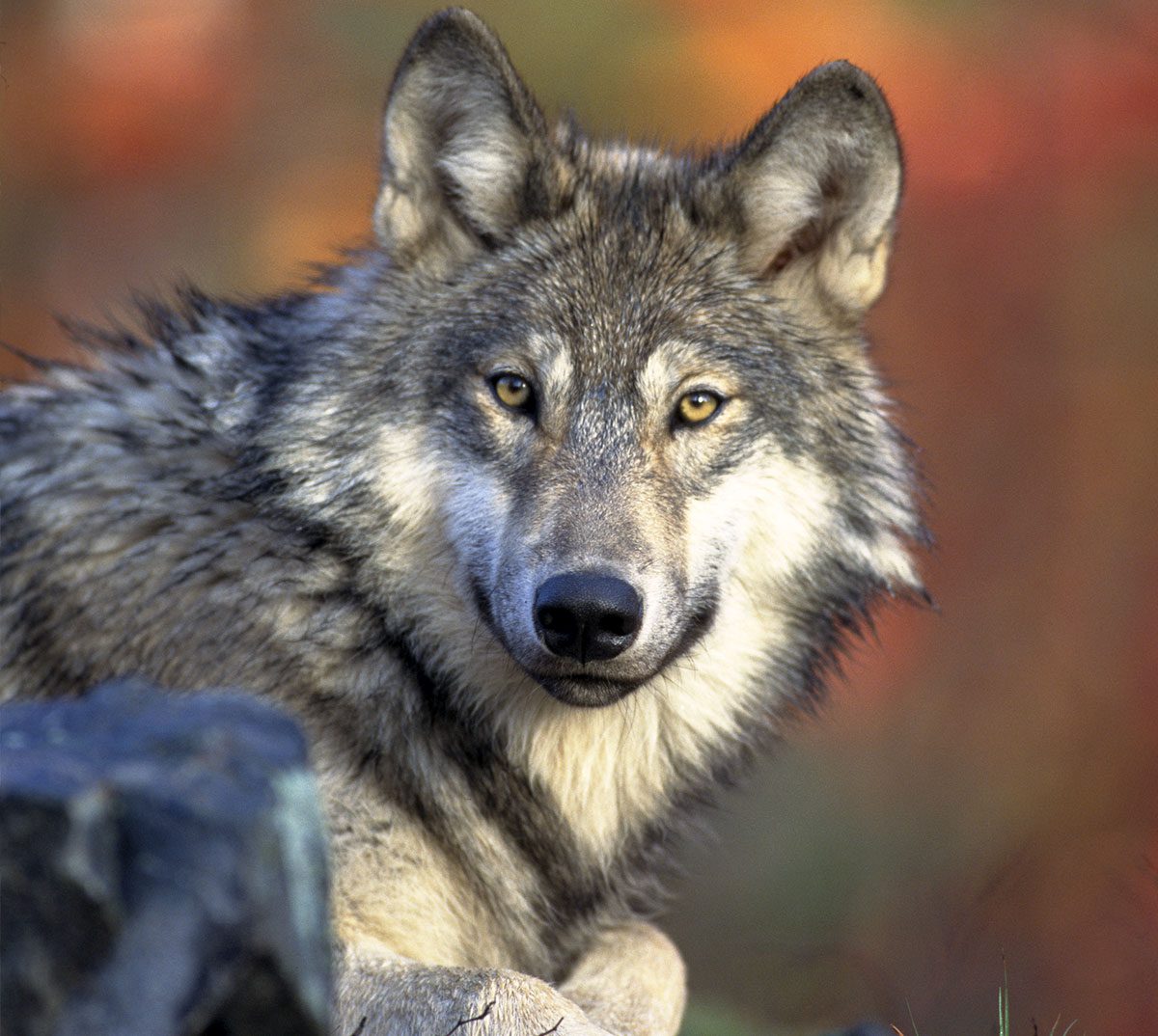
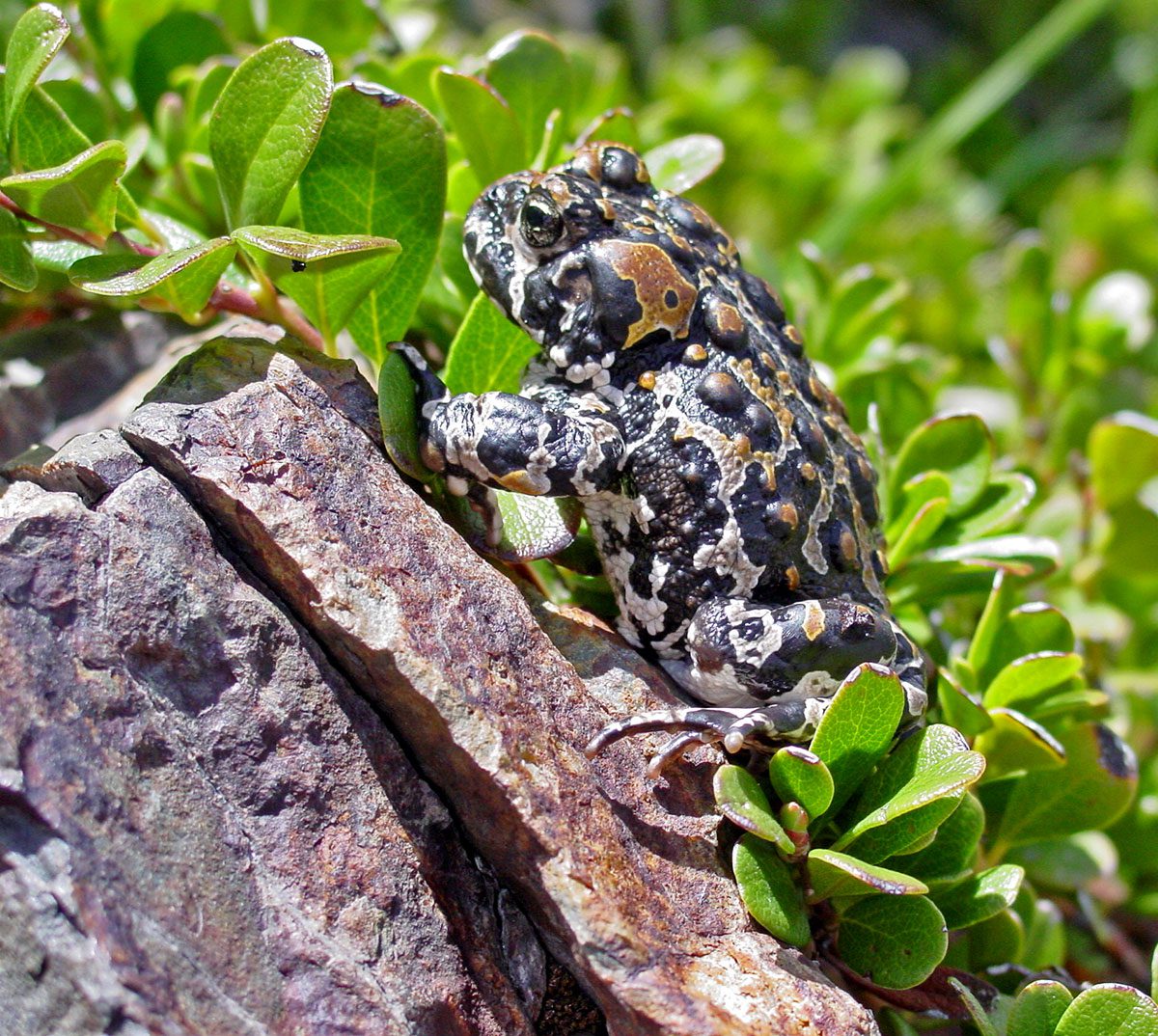
In Africa, for instance, the Yang Center’s long-running Elephant Listening Project uses ARUs to eavesdrop on elusive forest elephants and identify gunshots of poachers. It has helped train an independent team in the Republic of the Congo that is running crucial aspects of a 50-site acoustic grid in the 1,514-square-mile Nouabalé-Ndoki National Park, which is connected to other protected areas. Working with the Wildlife Conservation Society, the Elephant Listening Project is also establishing an analysis and training hub in central Africa with solar power systems and high-performance computers to process the acoustic data, as well as staff who can run the algorithms to detect elephants and gunshots. This hub will serve as a central processing and training center for other field teams running bioacoustic projects around the region, and will invite students from the region to work on independent research projects there. Here again, the idea is to replace the Yang Center as the hub, moving analysis capacity into the hands and lands of local people. Yang Center teams in Central America and Indonesia are launching similar efforts, with investment in equipment and long-term training programs.
This distributed capacity highlights one of the great powers of the new bioacoustic technology, which is its fluid scalability. ARUs and call recognizers like BirdNET can work at anything from a one-site operation all the way up to ecosystem and landscape scales and still be manageable both in the field and in the lab, office, or, for that matter, a person’s home. One of the products of this revolution is a relatively cheap call-recognizing device called Haikubox—an ARU sold for household use that provides identifications of the songs, chirps, and peeps of backyard birds.
The device, powered by a household electrical outlet, mounts to any wall or tree and, using a modified version of BirdNET, identifies birds within earshot in real time. Via a smartphone app or web interface, users can listen to recordings from the past 24 hours, get notified when specific birds are detected, and view historical charts showing when birds have visited. They can also share that data with researchers by having it uploaded to the Cornell Lab of Ornithology. As a recent WIRED review put it, it’s “one of the rare pieces of technology that actually increases your connection to the world around you, rather than cutting you off.”
Klinck, not surprisingly, has one in his own garden. This past spring, while the data servers at his office dissected audio from all over the globe, the app on his phone chirped with the latest news from his backyard Haikubox. The year’s first Baltimore Oriole had shown up near his home in Ithaca. By this one mellifluous measure, spring had arrived.
About the Author
David Dobbs is the author of three books and scores of articles on science, culture, medicine, and natural history in publications such as The New York Times, WIRED, and The Atlantic. See more of his writing on his website.

All About Birds
is a free resource
Available for everyone,
funded by donors like you
American Kestrel by Blair Dudeck / Macaulay Library
